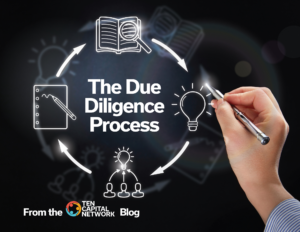
The Due Diligence Process
2 min read. The Due Diligence Process When embarking on a new investment, it’s essential to have a Due Diligence process in place to check

2 min read. The Due Diligence Process When embarking on a new investment, it’s essential to have a Due Diligence process in place to check

2 min read. The Due Diligence Process When embarking on a new investment, it’s essential to have a Due Diligence process in place to check

1 min read No one wants to invest in a startup that is doomed to fail; enter Team Due Diligence. “What we hope ever to

2 min read When embarking on a new investment, it’s essential to have a Due Diligence process in place to check the basics. This process